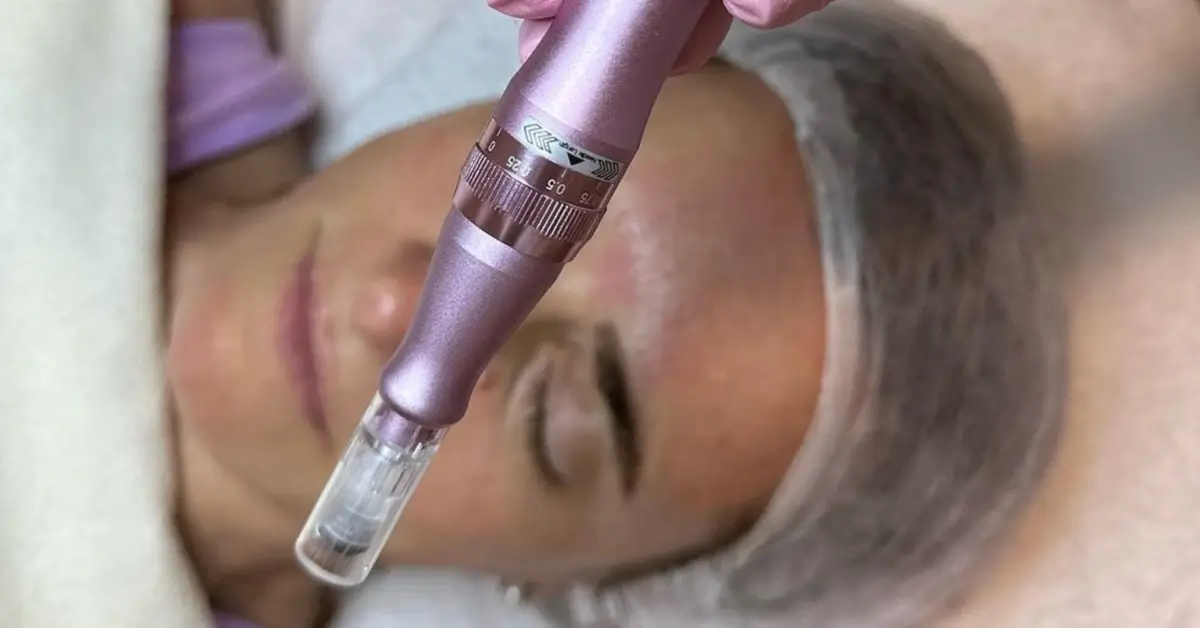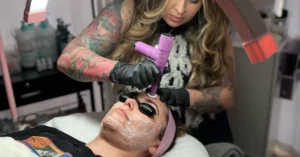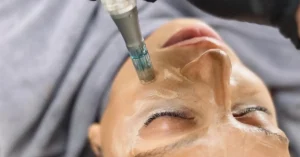Are you feeling exhausted from constantly fighting against acne, despite trying numerous treatments with no success? I understand completely, as I have also been tackling acne for many years.
However, I have discovered a game-changing solution that I would like to share with you: There are countless options available to help you achieve healthy, radiant skin.
Two shining stars in this skincare galaxy are hydrafacials and microneedling. While both promise skin improvement, they tread different paths and cater to distinct skin concerns. I’m your guide on a journey through the contrasts of hydrafacial vs. microneedling.
Table of Contents
Hydrafacial Vs. Microneedling
Hydrafacial is a non-invasive treatment that uses a special tool to exfoliate, cleanse, and hydrate the skin. This treatment is great for people who want to improve the overall health and appearance of their skin, as it can help reduce the appearance of fine lines, wrinkles, and hyperpigmentation. It’s also a good option for people with sensitive skin, as it’s gentle and doesn’t cause any irritation or redness.
Microneedling, on the other hand, is a minimally invasive treatment that involves using a device with tiny needles to create micro-injuries in the skin. This stimulates collagen production, which can help reduce the appearance of acne scars, fine lines, and wrinkles. It’s also a good option for people who want to improve the texture of their skin, as it can help reduce the appearance of large pores and improve skin tone.
Understanding Hydrafacial
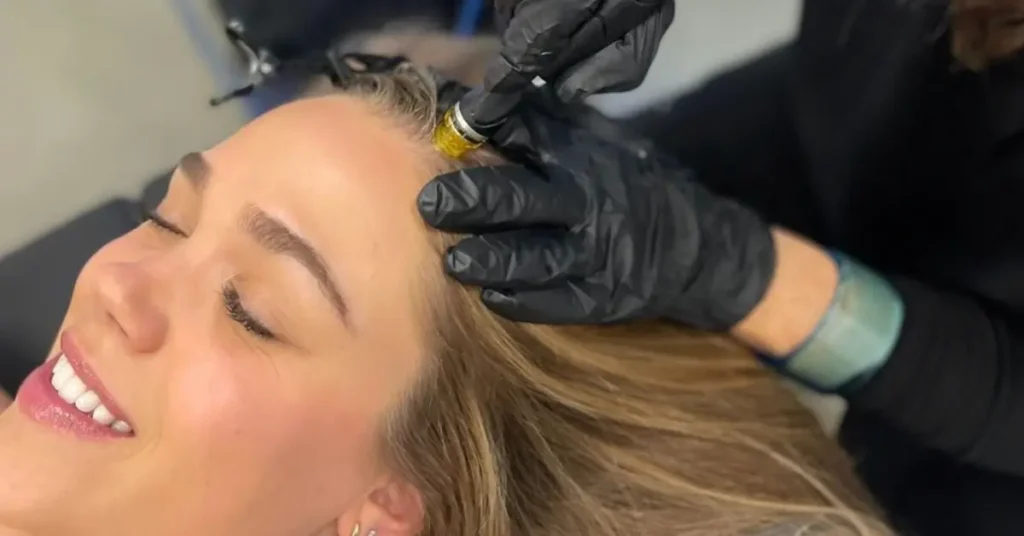
Hydrafacial is a non-invasive treatment that uses a patented device to cleanse, exfoliate, and hydrate the skin. During the treatment, a trained aesthetician will use the device to suction out impurities from your pores while simultaneously infusing your skin with a custom blend of serums.
The treatment is painless and requires no downtime, making it a popular choice for people with busy schedules.
One thing I love about Hydrafacial is that it is fully customizable. Before the treatment, the aesthetician will assess your skin and create a personalized blend of serums to target your specific concerns. For me, that meant a blend of hydrating and brightening serums to combat dryness and dullness.
Pro Tip: Hydrafacial can be a great option for people with sensitive skin. Unlike some other treatments that can be harsh or abrasive, Hydrafacial is gentle and non-irritating. Plus, because it is fully customizable, the aesthetician can adjust the strength of the treatment to suit your skin’s needs.
Understanding Microneedling
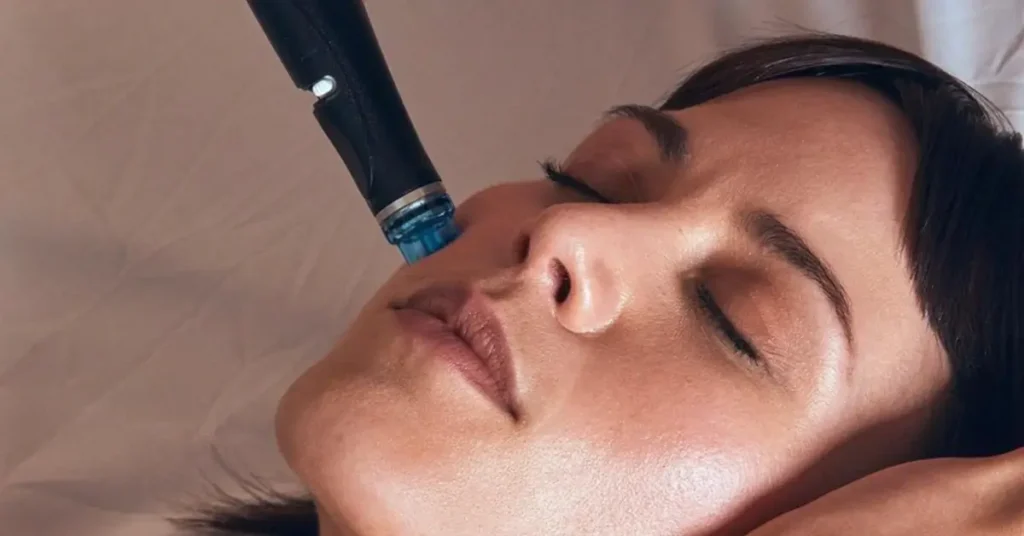
Microneedling is a minimally invasive cosmetic procedure that involves using a device with fine needles to puncture the skin and create tiny microchannels.
These microchannels stimulate the body’s natural healing process, which leads to an increase in collagen and elastin production. This increase in collagen and elastin helps to improve the appearance of fine lines, wrinkles, acne scars, and other skin imperfections.
I personally have had microneedling done, and I can attest that it is a relatively painless procedure. The needles used are very fine, and the sensation is similar to a light scratching or tingling feeling on the skin. The procedure usually takes about 30 minutes to an hour, depending on the size of the treatment area.
Hydrafacial Procedure
The procedure involves a multi-step process that cleanses, exfoliates, and hydrates the skin.
During the treatment, a handheld device is used to suction out impurities and dead skin cells, while simultaneously infusing the skin with a customized serum. The serum is tailored to the individual’s specific skin concerns, such as fine lines, wrinkles, or hyperpigmentation.
One of the best things about Hydrafacial is that it is suitable for all skin types, including sensitive skin. It is also a gentle treatment, so there is no downtime required. You can even apply makeup immediately after the treatment.
Pro Tip: To get the most out of your Hydrafacial treatment, make sure to drink plenty of water before and after the procedure. This will help to keep your skin hydrated and enhance the results.
Microneedling Procedure
During the procedure, a device with small needles is rolled over the skin, creating tiny punctures that trigger the body’s natural healing response. This process stimulates collagen and elastin production, which can help reduce the appearance of fine lines, wrinkles, and acne scars.
Pro Tip: Avoid using any retinoids or exfoliants for at least a week prior to the treatment, because these products can make the skin more sensitive and increase the risk of irritation during the procedure.
After the microneedling session, my skin was a bit red and sensitive for a few days, but I noticed a significant improvement in the texture and tone of my skin after just one treatment. Most people require multiple sessions to achieve optimal results.
In comparison to HydraFacial, microneedling is a more invasive procedure that involves puncturing the skin with needles. However, it is also more effective at stimulating collagen production and improving the overall texture and tone of the skin.
Benefits of Hydrafacial
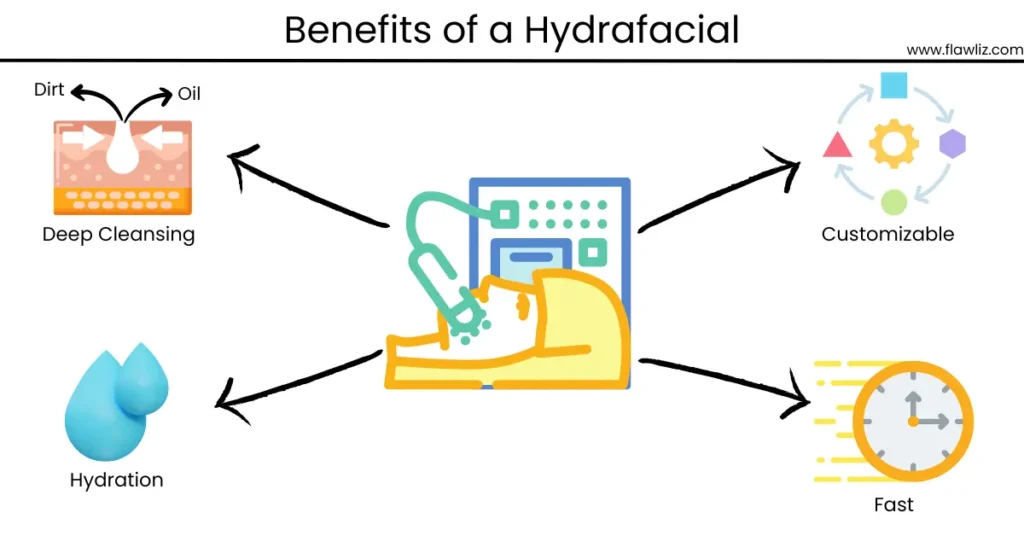
Firstly, hydrafacial is a non-invasive treatment that uses a patented Vortex-Fusion system to cleanse, exfoliate, and hydrate your skin. It’s a gentle, pain-free process that doesn’t require any downtime, making it perfect for busy people like me who don’t have time to recover from more aggressive treatments.
Another benefit of hydrafacial is that it’s customizable to your specific skin concerns. The treatment uses different serums and techniques to target issues like acne, fine lines, and hyperpigmentation. During my own hydrafacial, my aesthetician used a serum with salicylic acid to help clear up my breakouts, followed by a serum with hyaluronic acid to hydrate my skin.
Pro Tip: If you’re looking for a more intense treatment, you can add on a booster like Britenol or DermaBuilder to target specific concerns.
One of the things I love most about Hydrafacial is that you can see immediate results. After my treatment, my skin looked brighter, smoother, and more hydrated. Plus, the results are long-lasting, so you don’t have to worry about scheduling frequent appointments.
Benefits of Microneedling
As someone who has struggled with acne scars and uneven skin texture, I was intrigued when I first heard about microneedling. After doing some research and trying it out for myself, I can confidently say that microneedling has numerous benefits for those looking to improve the appearance of their skin.
First and foremost, microneedling stimulates collagen production in the skin. Collagen is a protein that gives skin its elasticity and firmness, and as we age, our bodies produce less of it. By creating tiny punctures in the skin with a device called a dermaroller or a microneedling pen, microneedling triggers the body’s natural healing process and encourages the production of new collagen.
In addition to improving skin texture and firmness, microneedling can also reduce the appearance of fine lines and wrinkles. By boosting collagen production, microneedling helps plump up the skin and smooth out any wrinkles or creases.
Microneedling: the benefits for your face, Depigmentation, Photoaging, Facial tightening and Hair loss. Benefits for your body, Draining, Lipolytic, Body Firming and Restoring Vitality to your hands… https://t.co/9maoK4lAmH
— Bob Helper (@foreveryoungbex) August 26, 2020
Another benefit of microneedling is that it can improve the absorption of skincare products. By creating tiny channels in the skin, microneedling allows topical products to penetrate deeper and work more effectively.
Finally, microneedling can also improve the appearance of acne scars and hyperpigmentation. By stimulating collagen production and encouraging the skin to heal itself, microneedling can help reduce the appearance of scars and dark spots.
My Advice: To get the most out of your microneedling treatment, be sure to use a high-quality serum or moisturizer afterward. Look for products that contain hyaluronic acid, vitamin C, or other ingredients that can help boost collagen production and improve skin texture.
Hydrafacial Side Effects
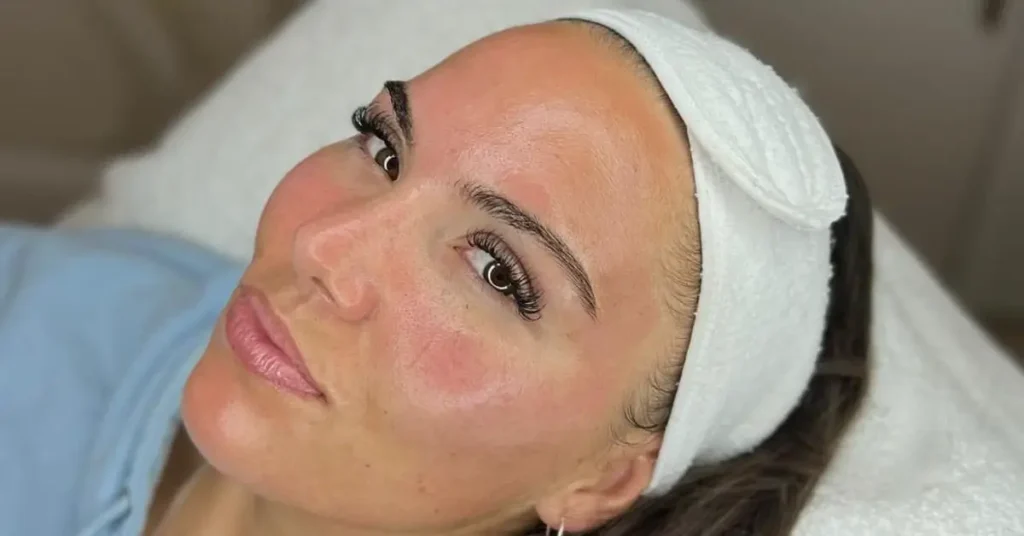
As with any cosmetic procedure, there are potential side effects to consider when undergoing a hydrafacial treatment. However, the majority of patients experience little to no adverse reactions. Hydrafacial is considered a safe and effective treatment for improving the appearance of the skin.
That being said, some patients may experience mild side effects such as redness, swelling, and sensitivity immediately following the treatment. These side effects typically subside within a few hours to a day. It is important to avoid direct sun exposure and to wear sunscreen after the treatment to protect the skin.
In rare cases, more severe side effects may occur such as infection, scarring, or hyperpigmentation. Patients with a history of cold sores may experience an outbreak after a hydrafacial treatment. It is important to discuss any medical conditions or concerns with your provider before undergoing the treatment.
To minimize the risk of side effects, it is recommended to choose a reputable provider who is experienced in performing hydrafacial treatments. Additionally, following proper aftercare instructions can help to ensure optimal results and minimize the risk of complications.
Pro Tip: To reduce the risk of side effects, it is important to avoid harsh skincare products and treatments for at least 24 hours after a hydrafacial treatment. Stick to gentle, hydrating products to nourish and protect the skin.
If you are considering a hydrafacial treatment, it is important to weigh the potential benefits and risks. While side effects are possible, they are typically mild and short-lived. With proper aftercare and an experienced provider, hydrafacial can be an effective way to improve the appearance and health of your skin.
Microneedling Side Effects
Microneedling is a minimally invasive cosmetic procedure that uses a device with tiny needles to puncture the skin and stimulate collagen production. While it is generally safe, there are some side effects to be aware of.
One common side effect of microneedling is redness and swelling in the treated area. This is a normal reaction and usually subsides within a few hours to a few days. Some people may also experience mild bruising or pinpoint bleeding.
Another potential side effect is skin irritation or itching. This can be due to the use of certain skincare products or medications before or after the procedure. It is important to follow the provider’s instructions and avoid using any harsh products on the treated area.
In rare cases, microneedling can lead to infection or scarring. It is important to choose a reputable provider and follow proper aftercare instructions to minimize the risk of complications.
Pro Tip: To reduce the risk of side effects, it is important to choose a qualified provider who uses sterile equipment and follows proper sterilization procedures. It is also important to avoid sun exposure and use sunscreen after the procedure.
Hydrafacial or Microneedling: Cost Comparison

When it comes to skin treatments, the cost can be a significant factor to consider. Both Hydrafacial and Microneedling are popular treatments that offer a range of benefits, but which one is more cost-effective?
In my personal experience, the cost of Hydrafacial is generally higher than that of Microneedling. The average cost of a single Hydrafacial treatment can range from $150 to $300, while a single Microneedling treatment can cost between $100 to $700, depending on the area being treated and the number of sessions required.
One pro tip for those considering these treatments is to do your research and find a reputable provider. Some providers may offer lower prices, but the quality of the treatment may not be as high, so it’s essential to balance cost with quality.
To help you compare the costs of Hydrafacial and Microneedling, I’ve created a table below:
| Treatment | Average Cost 💵 |
|---|---|
| ‣ Hydrafacial | $150 – $300 |
| ‣ Microneedling | $100 – $700 |
It’s important to note that the cost of these treatments can vary depending on factors such as location, provider, and the specific treatment plan.
Choosing Between Hydrafacial and Microneedling
In my personal experience, I have found that Hydrafacial is an excellent option for those looking for a quick and effective treatment. The treatment uses a combination of exfoliation, extraction, and hydration to leave your skin feeling refreshed and rejuvenated. The process is painless and takes around 30 minutes to complete, making it a great option for those with busy schedules.
On the other hand, Microneedling is a more intensive treatment that involves using tiny needles to create micro-injuries on the skin’s surface. The treatment stimulates collagen production, which can help reduce the appearance of fine lines, wrinkles, and scars. While the treatment can be uncomfortable, the results are worth it.
To help you understand the differences between Hydrafacial and Microneedling, I have created a table that outlines the key features of each treatment:
| Treatment | Benefits | Duration | Pain Level |
|---|---|---|---|
| Hydrafacial | Exfoliates, extracts, and hydrates skin | 30 minutes | Painless |
| Microneedling | Stimulates collagen production, reduces fine lines and wrinkles | 60-90 minutes | Uncomfortable in some cases |
Pro Tip: If you are unsure which treatment is right for you, consider consulting with a skincare professional. They can help you determine which treatment will best address your skincare concerns and provide you with personalized recommendations.
Microneedling vs HydraFacial: A Recap
HydraFacial is a non-invasive treatment that uses a special device to exfoliate, extract impurities, and infuse the skin with hydrating serums. It’s a great option for people who want a quick and painless way to improve their skin’s texture and appearance.
One of the biggest advantages of HydraFacial is that it’s customizable, so you can choose the specific serums that will work best for your skin type and concerns.
On the other hand, microneedling is a more intensive treatment that involves using a device with tiny needles to create microscopic punctures in the skin.
This process stimulates collagen production, which can help reduce the appearance of fine lines, wrinkles, and acne scars. While microneedling can be uncomfortable and may require some downtime for the skin to heal, the results can be more dramatic than those of HydraFacial.
To help you compare the two treatments, here’s a table summarizing the pros and cons:
| Treatment | Pros | Cons |
|---|---|---|
| HydraFacial | ✅ Quick and painless, customizable, hydrating | ❌ Results may not be as dramatic as microneedling |
| Microneedling | ✅ Stimulates collagen production, can improve fine lines, wrinkles, and acne scars | ❌ Can be uncomfortable, may require downtime for skin to heal |
FAQ
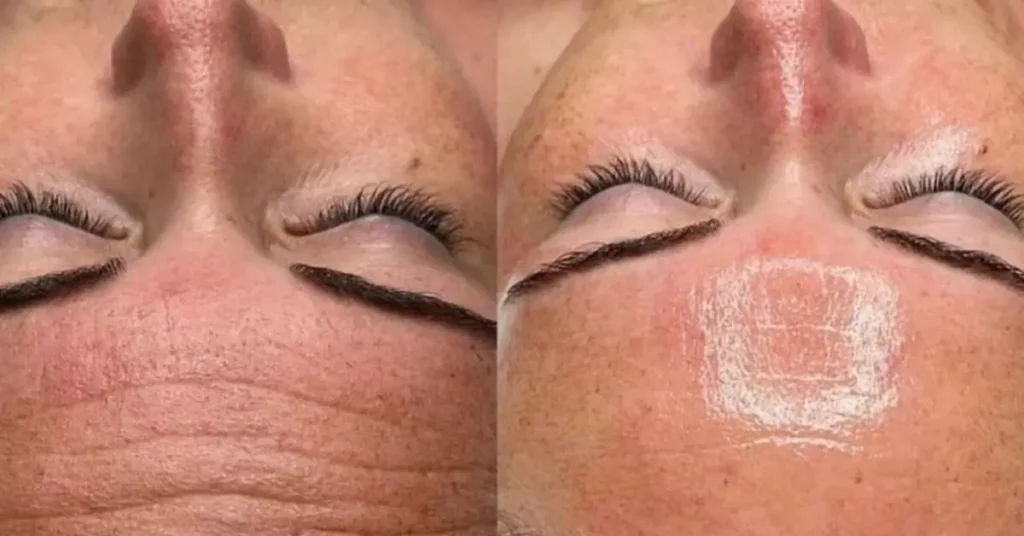
Should I get a HydraFacial before microneedling?
Getting a HydraFacial before microneedling can be beneficial. The HydraFacial preps the skin, making it more receptive to microneedling and enhancing overall treatment effectiveness for a radiant complexion.
What is the disadvantage of HydraFacial?
One disadvantage of HydraFacial is its cost, as it’s typically more expensive than some other facials. Additionally, results may require ongoing treatments for maintenance.
Do Hydrafacials really make a difference?
Yes, Hydrafacials can make a noticeable difference in your skin. They cleanse, exfoliate, and hydrate, resulting in improved texture, tone, and radiance. However, the extent of improvement may vary based on individual skin conditions and concerns.
Can Hydrafacials go wrong?
Yes, while rare, Hydrafacials can go wrong. Possible issues include skin irritation, redness, or an adverse reaction to the serums used. It’s essential to choose a skilled provider for safe treatments.
Why do Hydrafacials cost so much?
Hydrafacials cost more due to their advanced technology, use of specialized serums, and customizable nature. They provide comprehensive skincare benefits, making them a worthwhile investment for many seeking high-quality facial treatments.
If you liked this blog article about the topic: The Face-Off: Hydrafacial Vs Microneedling Explained, don’t forget to leave us a comment down below to tell us about your experience with it.

